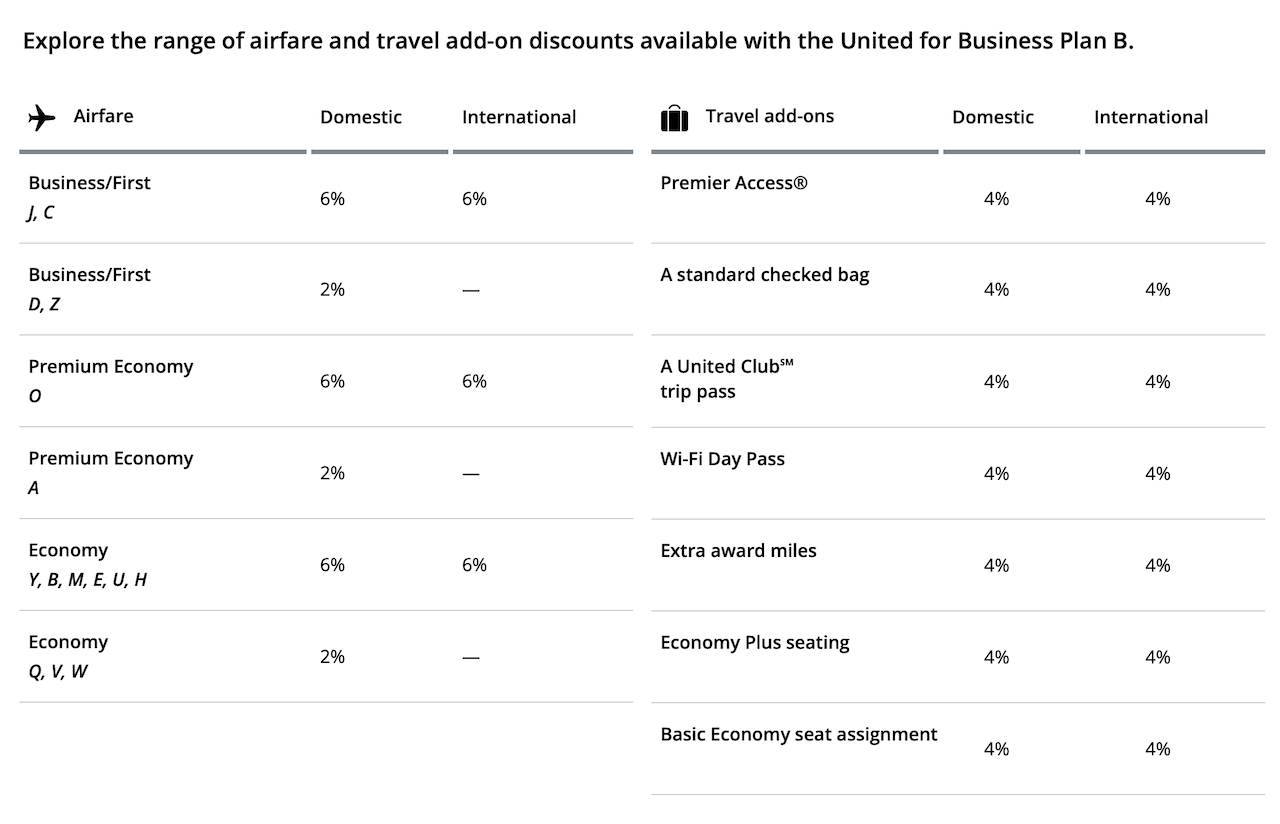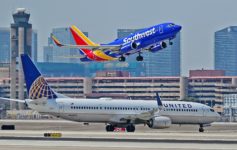Airline business incentive programs like Delta SkyBonus, United PerksPlus, and American Business Extra are all changing this year and on short notice. Why?
If you are considering booking travel or signing up for a new credit card please click here. Both support LiveAndLetsFly.com.
If you haven’t followed us on Facebook or Instagram, add us today.
What Are Business Incentive Programs?
Airlines want corporate travelers. Corporate travel is consistent, insensitive to price, fills near-term flights, and is more likely to go premium than any other type of traveler. All four major carriers offer ways for the business which is responsible for setting business travel policies and paying for tickets for its staff a separate loyalty program that encourages companies to book with them.
A simple example is the American Airlines Business Extra program. Businesses would earn 1 business extra point per $5 spent on airfare. These points which are different than Aadvantage miles, earn solely based on revenue but the award chart is similarly smaller. Redemptions for this program could be Gold elite status or an Admiral’s Club membership, in addition to flights or upgrades. Earning Business Extra points does not take away the status and mileage accrual of the employees traveling.
What Are The Changes?
Each of them is changing somewhat to simplify the business model. In fairness to the airlines, it was a secondary currency to manage with differentiated earning rates and added complexity not just to the carrier but to the business travel managers as well. For example, in SkyBonus routes that originate in Delta hub cities would earn 3x points per airfare dollar whereas those that originate (or arrive) in non-hub cities would earn 6x points. On some JV partners in elevated classes of service, it could be even higher.
A coach reward in SkyBonus started at around 80,000 SkyBonus points even when standard awards in the SkyMiles program remained around 25,000 for domestic itineraries. Meanwhile, in the American Business Extra program where earnings fluctuated between 1 and 2 points per $5 in airfare spend, trans-Atlantic business class awards from 7,200. United’s PerksPlus was just as complex if not more so than either of these two.
We can bury that obscurity and trade it in for new opaqueness.
American Airlines Aadvantage Business
American Airlines Aadvantage Business is so scant on details and so late in announcing the changes that it almost seems that the decision to sunset Business Extra was not planned well in advance. For example, gone are the Business Extra points (separate currency), they will be replaced with Advantage points earned for the business and increased loyalty points accruals for registered travelers.
American just hasn’t disclosed how many loyalty points will be earned by those traveling employees.
“Fly for business and earn more Loyalty Points Earn additional Loyalty Points* on business travel along with the miles and Loyalty Points you earn through your AAdvantage® membership.” – Aadvantage Business
As a side note, American had dropped the silly “aa” throughout the brand for the most part. The Business Extra program originally had two at the end, Advantage had replaced the double “a” at the front. When American had an opportunity to just drop it altogether, this still named the program “Aadvantage Business.” So odd.
United For Business (U4B)
While the former program, Perks Plus, will remain available in Latin America and for those utilizing a travel agency. For everyone else, United For Business is a new site the carrier has set up that incentivizes businesses in the form of perks and discounts. Following a small quiz, United will create a plan that puts client priorities first. In my case, booking through the U4B portal will allow my business to save up to 6% on international business class flights. Other businesses may have different results than the profile I created.
Candidly, I rather liked having a stockpile of points that automatically accrued for my company travelers independent of their own status, points, and benefits even though the earning was complex and the points inflation annoying.

It also seems as though answering differently on the questionnaire could have charted a different business plan (I got “Plan B”.)
Delta SkyBusiness
Delta, which seemed to put the most time and effort into changing its program announcing the shift in July to take place in October of this year, seemed to put the least effort into making meaningful changes. Its secondary currency falls away, like the other programs, and the business will now earn its own incentives but in the form of SkyMiles. Here’s a chart that TPG put together showcasing that the same more points for this, fewer points for that complexity remains, just without the secondary currency and redemption system.

Wow. Innovative.
Why Are All These Programs Changing Right Now?
I’m struggling to understand why all three programs are making changes right now, some with little notice. Delta SkyBonus gave notice earlier in the year (months ago) that the program was changing, but American Airlines only notified members a few weeks before sunsetting the current Business Extra Program and transitioning to Aadvantage for buh-buh-Business. United was also on short notice and some of it reflects poor planning as well.
Is there a piece of legislation I missed that moved these to make the changes? Was there a secret meeting (collusion) of the Big 4 leadership? Is this just a case of following the leader?
The truth is, I really can’t point to a reason and couldn’t find any explanation for all of them doing so on the web.
One interesting point is that they all seem to make a case that the new versions of their programs work for all businesses – small and large. All of them continue to enforce a minimum spend threshold of $5,000/year in airfare, and at least three distinct flyers for the business. However, Delta indicates that it has a “member” level that doesn’t require either, yet elsewhere states the minimums as above.
American Airlines will allow a waiver of those minimums for those who add a CitiBusiness Aadvantage Platinum Select credit card to their wallet.
For businesses who may have made the threshold in years past, but didn’t last year, their points may be trapped or lost forever. All of the programs give a while for businesses to cash out or convert their points to the primary loyalty currency but you have to be a current eligible member. On American, for example, I have nearly 4,000 points trapped from prior accumulations that I would have been able to activate in 2024 with travel spend. However, as the program has been closed I can no longer requalify and thus, will never get those points out. That’s a shame and it’s not the only orphan balance I have, I am surprised at just how ruthless the programs have been.
Southwest Business (SWABIZ)
Interestingly, Southwest has been out recruiting new members to join their corporate travel management program hard. They are offering a bounty on new members (25,000 points) up to 125,000 in total annually. That said, its program is different than the others. Its focus is on benefits to corporate travel managers like creating phantom credit cards so that the real number isn’t exposed, and setting controls. For larger group meetings, there are incentives and easy name changes to tickets – something that’s very hard to do in the standard program.
However, I will candidly share that the corporate division of my travel agency that manages travel and these programs for clients has found Southwest to be terrible. It took more than six months just to get set up with the wrong information, an overly manual process, and in the end, wasn’t nearly worth the squeeze for the clients. For legacy programs built on older technology, I can understand some of these teething problems, but for a brand-new program with good tech, it’s grossly unacceptable.
Conclusion
The major airlines are changing their business incentive programs all at the same time and kind of without explanation. For the most part, yes, they are simpler as they have all abandoned a secondary currency in favor of the primary, but few other material changes have occurred. Further, for those who haven’t qualified in the last year but still hold a balance, that value may have just vanished forever, an odd bold move that they have all seemingly chosen to make.
What do you think? Have you used these programs in the past? Have you migrated to the replacements?




It’s no coincidence that they are cutting back on these programs. Reduced competition makes signaling and following “the competition” to cut costs more likely. The never ending drive to manage earnings and margins — including improving them for shareholders and to “keep up with ‘the competition’” also has us in this self-perpetuating monkey see monkey do stuff.